Balancing work, family life, and everyday stressors is more of a challenge than ever. Meditation is a great practice to help mitigate the increasingly busy world. But for so many, the thought of sitting quietly for a set period of time isn’t appealing or realistic. Moving meditation is a type of meditation that doesn’t require sitting still and can be easily fit into any lifestyle or schedule.
Unlike other types of meditation that require stillness, moving meditation utilizes movement as the foundation of the practice. Moving meditation is the combination of two parts, intentional physical movement with focused awareness. Intentional physical movement is movement with mindfulness as the goal rather than physical exercise. Focused awareness is the mental state that is practiced during moving meditation. Focused awareness means being aware of how your body feels when it moves.
There are many types of moving meditation. These include walking, yoga, tai chi, qigong, and stretching. What makes these activities a moving meditation is the focused awareness. Let’s dive in to this a little deeper.
Walking can be a form of moving meditation, but that doesn’t mean every time you walk you are meditating. When you take a walk for the purpose of exercise, your brain isn’t focused on the movement itself, which isn’t meditative. But walking is a form of moving meditation, when the intention behind the walk is shifted towards a focus on the movement itself, like paying attention to the sensation of your arms swinging, the sounds around you, or your feet hitting the ground.
Moving meditation allows people to experience the benefits of meditation without having to sit still or carve out specific meditation time. For those who find it easier to focus while moving or those with limited schedules, moving meditation offers the flexibility that many don’t find in traditional meditation practices.
Like other types of meditation, kids can absolutely practice and benefit from moving meditation. This type of meditation is especially appealing to kids who often gravitate towards kinesthetic learning styles and enjoy moving their bodies. For kids who struggle with holding their attention for a long period of time, moving meditation can be a particularly beneficial style of meditation. The one thing to keep in mind for children who want to practice moving meditation is to keep the movement intentional.
It can be easy for kids to get distracted and forget they’re meditating, so make sure to remind them to shift their attention to the movement itself. Sometimes guided audio or calming music can help kids keep their awareness focused.
⭐ Tip: If your child struggles to keep their attention focused, try playing Dragon’s Magical Forest for the duration of their moving meditation.
Moving meditation offers the same benefits that traditional meditation provides: enhancing wellbeing, reducing anxiety and stress, and much more. Like most practices, the benefits of moving meditation are cumulative, meaning the more you practice, the more benefit you will feel. This is especially true for children, which is why making meditation part of their daily routine is so important.
Some of the benefits of moving meditation include:
Practicing a moving meditation is quite simple and very adaptable to your personal preferences. First, begin by choosing a type of gentle movement to practice in a quiet setting. Take a few deep breaths in, allowing yourself to fully relax. Begin your chosen type of movement, paying attention to your body, breath, or senses around you. Practice for as long as you like. You can end your practice with breathwork, to transition into the next part of your day.
There are many ways to practice moving meditation, the key is finding out which style is most fitting for you or appealing to young meditators.
Stretching is a great practice to introduce mindful movement as it can be practiced in the same place. While stretching, take note of how the muscles feel in your body, the placement of your body, and the feeling of the ground underneath. These mindful practices are what transform stretching into a form of movement meditation.

Walking is one of the most versatile forms of moving meditation. All it requires is bringing mindfulness into the walk and focusing your attention on your body. This focus can be on your breath, your feet as they touch the ground, or the things you see and hear. When practicing a walking meditation it is important to remember the goal of this walk is mindfulness, not physical exercise or the destination.

Perhaps the most famous form of moving meditation, yoga is an ancient set of practices that combine mental focus, breathing, physical postures, and meditation. The goal of yoga is to still the mind while moving through physical postures. In recent years, yoga for kids has become much more popular, as children enjoy moving their bodies in new ways.
Believe it or not, jumping on a trampoline can be a meditative experience. When you jump on a trampoline you activate your proprioceptive and vestibular functions. This means that you better understand the way your body feels in space. The gentle bouncing up and down tends to soothe the body and mind, reduces stress, and improves emotional regulation.
Trampoline meditation is especially good for very active children who need to be moving while meditating. Again, the key to making jumping on a trampoline meditation and not play is to have children focus their attention on the body sensations of the activity or an object of focus nearby.
Trampoline meditation is a wonderful practice for children of all abilities, and especially those with ADHD, anxiety, and autism spectrum disorders. Kids often love jumping to repetitive music, like rhythmic drumming tracks, and bounce to the beat.
Lesser known than the others, dancing can be practiced as a form of moving meditation, as long as it follows the tenets of mindfulness. Often practiced with calming, rhythmic music, mindful dancing allows for you to explore movement in an unstructured and sensory-pleasing way. The key is to take note of how your body wants to move and the feelings of free flowing movement. To keep kids focused on their bodies and minds, not on distractions like loud music, it is best to play gentle music with a repetitive rhythm.

Begin by standing (or sitting if in a wheelchair) and feeling your feet connected to the ground. If you are able, keep your feet a hips-width apart.
Take a few slow, calming, deep breaths. Notice how your feet feel on the ground. (If you are in a wheelchair, feel them against the footrests.)
Move around a little bit. Forward and backward and side to side. Then find the place where you feel most balanced and strong. This is your center. Begin walking slowly, on a nice, short path. With each step, notice how your feet feel on the ground, or the grass.
If you have a yoga mat, it is a nice practice to just walk from one end of the mat to the other, and then turn around and start again. If you are using a wheelchair, begin moving slowly, feeling the sensations as the wheels move, and your body is connected to the chair.
Notice how your feet feel with each step. What part of your foot feels the step? Your toes? Your heels? The ball of your foot?
Continue walking slowly and notice how the rest of your body feels when you are walking. Can you feel it in your claves? Your knees? Your hips? Can you feel the movement in your tummy? Your chest? Your arms, neck, face, and head?
If you are in your wheelchair, see if you can notice how moving feels throughout your body. Can you notice the rhythm of your steps? Is it like, “Step, Step, Breathe?” “Step, Step, Breathe?” Can you count it out like beats in a song? “One, Two, One, Two?” or maybe “One…Two…Three…Four?”
Your mind will begin to think thoughts. That’s okay. When you catch your mind wandering, just bring it back to noticing the way your body feels as you walk. When you are done walking, or moving in your chair, you can come back to a place of stillness. Take a few deep breaths and thank your feet, or your chair, for helping you move in this way.
A walking meditation is a wonderful way to help children become aware of the sensations in their bodies. You can expand this practice into mindfully doing other things like teeth brushing, swinging, or jumping on a trampoline.
It’s important to remember that while moving meditation incorporates movement, the practice is about applying focused mindfulness in a specific way. Limiting distractions is key to getting the most benefit out of your practice. It is especially important to teach kids that this practice isn’t about the movement, but paying close attention to how the movement feels. Removing devices, loud noises, and other common distractions will set up your practice to be most beneficial.
Free flowing, comfortable clothing is an important part of moving meditation. Soft fabrics that allow for comfortable movement can help enhance the practice. Make sure children are wearing securely tied or Velcroed shoes, or have them wear socks or go barefoot if practicing within a safe location.
If listening to music with headphones, make sure these are at a comfortable volume and feel good while being worn. This is especially crucial for kids, who may be prone to readjusting or get overstimulated by loud music.
However your body wants to move is the right way to move for you. Remember that movement looks different for everyone and whatever movement feels best for you is the right practice. Some people will enjoy certain forms of movement more than others, and that’s okay. Movement is movement, whether you practice yoga, use wheels, or prefer stretching.
A great way to begin and end your practice is through breathwork. Deep breathing helps you bring a sense of calm into your practice, allowing you to more easily practice mindfulness. Similarly, incorporating breathwork into the end of your practice can help you close the practice and begin the next part of your day.
Making moving meditations accessible for kids is especially easy since there are so many kinds of moving meditations to practice.
For children who use wheels, a walking meditation can be adapted so that instead of focusing on the sensations of walking on their feet they can focus on the way their body feels in their chair as it moves. They can also focus on moving and noticing the things they hear, smell, and see while they are moving.
Children with paralysis or spinal cord injuries may not be able to feel the movement of their bodies in a moving meditation. Likewise, they may not be able to use their breath as an anchor. In cases like this children can move in whatever ways feel comfortable to them and perhaps use a sound or a color as the anchor for their attention. For example, a child in a wheelchair who does not feel body sensations may enjoy having a brightly colored scarf attached to their wheelchair. They can focus on the color and motion of the scarf as it moves with air.
You can also attach brightly colored scarves or ribbons to children’s walkers, swings, or trampolines as a way to help kids who may struggle with body awareness and breathwork. Many practices like yoga, dance, tai chi, and quigong can be performed seated. Many gentle stretches or yoga poses can be done while laying down. Please check with your child’s medical team before implementing any of these ideas to make sure it is safe for your child.
However little ones move or enjoy meditation, there’s a type of meditation perfect for them.

